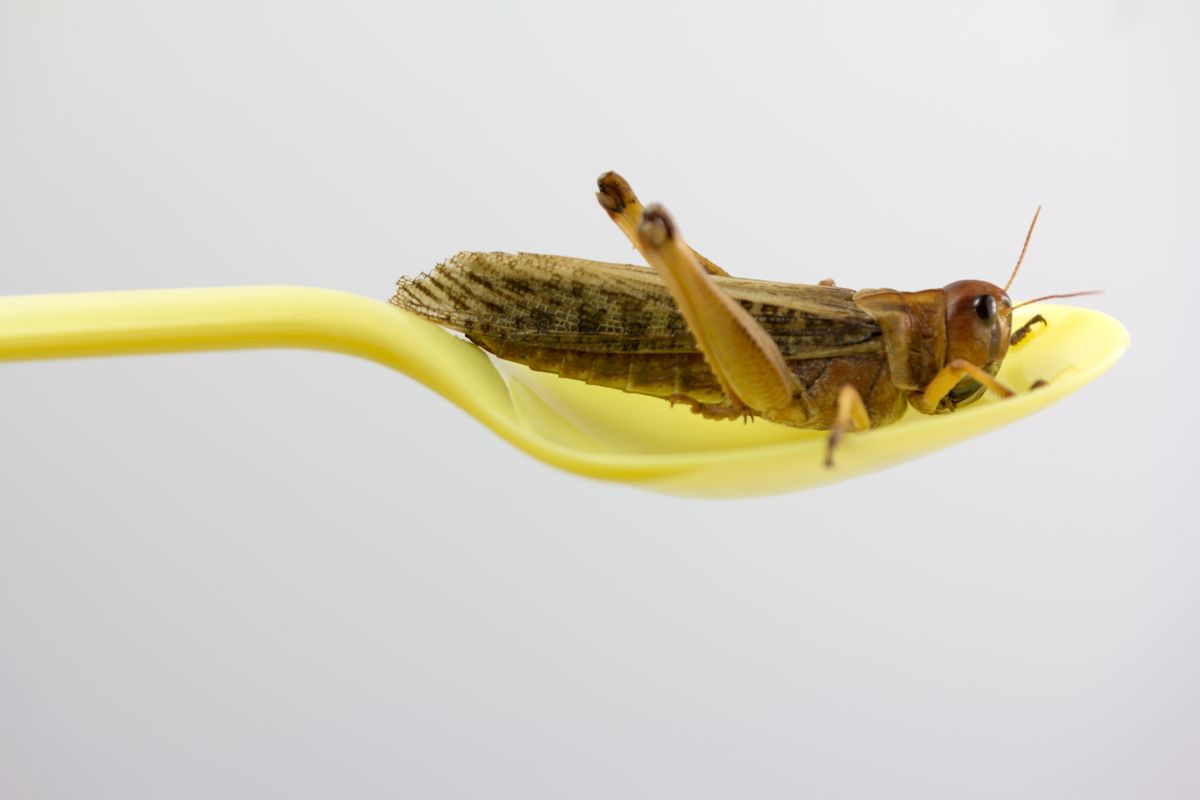Producing meat pollutes and requires a lot of space and resources (water, grains . . . ). To protect the planet, we must therefore find new sources of protein. One of the solutions is to replace, at least partially, meat by insects.
The problem is that insects, as a food, are rejected by Europeans and North Americans as inedible, dirty and disgusting. Yet, 2 billion humans (in Asia, Africa, South America) eat them regularly. The most commonly consumed in the world are beetles such as beetles, mainly in larval form (like the mealworm), lepidopterans (caterpillars) and hymenopterans (bees, wasps and ants).
Insects are interesting because they pollute less and require less water and food than cows or pigs. They also need less space to be raised and are rich in protein.
For a few years, researchers have been studying how to get adults in the West to accept insects, but few children. So we confronted children with edible insects to study their reactions.
Bugs with ketchup or chocolate?
Children may indeed play an important role in the introduction of entomophagy (eating insects) in a country like France for three reasons.
First, eating habits within a culture evolve over generations, so that young consumers may adopt new practices that they will then pass on to their children.
Second, childhood is a very important period, as food preferences learned early in life persist into adulthood. Finally, children also influence what their family and friends eat. By consuming insects themselves, they may inspire them to eat insects.
We interviewed 43 French children between the ages of 8 and 13 about their thoughts on eating insects. In a first study, they were asked to describe a child who eats insects (what he or she looks like, where he or she lives) and then to express how they felt about pictures of whole insects (grasshoppers, crickets, mealworms), ketchup- or chocolate-flavored insects, shortbread cheese and a chocolate cake containing powdered insects.
In a second study, children were interviewed in groups of two or three. This time we showed them real dried mealworms and a plain cake containing powdered mealworms. They also watched excerpts from the TV show Top Chef in which crickets and ants were cooked and eaten.
Children are curious but need to be reassured
The results of these studies show first of all that children think, like adults, that insects are not edible in our culture. According to them, insect eaters live in distant countries or do so to survive. Otherwise, eating insects is associated with filth or disgusting challenges on shows like Fort Boyard or Koh-Lanta.
Before being exposed to insects in the study, most children spontaneously indicate that they would refuse to eat them because they are disgusted by them. They imagine an unpleasant taste and sensation in their mouth. When we show them insects in pictures or in real life, they are more attracted to small insects like mealworms, which are easier to swallow than crickets or grasshoppers.
Insects flavored with ketchup or chocolate are a little more accepted because these are tastes they know and like. But the foods they prefer are those in which the insect is hidden, such as cake, because it looks like a "normal cake."
Another important result is that the children change their attitude during the study. Observing, handling and smelling real dried mealworms reduces their disgust and arouses their curiosity.
On the other hand, the children interviewed in small groups of two or three influenced each other. Some finally agreed to eat insect cake because their friends had tasted it. The children were also more willing to taste whole insects after watching the TV show Top Chef with well-cooked insects.
This study shows that children in France can finally get used to the idea of eating insects quite quickly. They are disgusted by whole insects but curious about them. Their interest may increase if insects are associated with familiar tastes or foods and if they are eaten in a reassuring situation, such as with family or in a fun situation, such as during a challenge with friends.
Céline Gallen, Professeur des Universités en Sciences de Gestion, IAE Nantes, NANTES Université, Université de Nantes; Gaëlle Pantin-Sohier, Professeur des universités en science de gestion, IAE Angers - Université d'Angers, and Valérie Hémar-Nicolas, Professeure des universités en sciences de gestion et du management - Consommation alimentaire et durabilité, Université Paris-Saclay
This article is republished from The Conversation under a Creative Commons license. Read the original article.



Shares